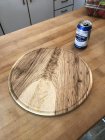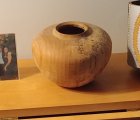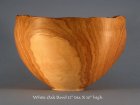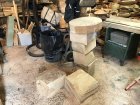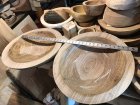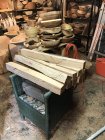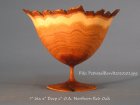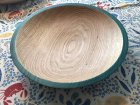- Joined
- Jul 18, 2018
- Messages
- 1,330
- Likes
- 2,864
- Location
- Baltimore, MD
- Website
- loujacobswoodturning.com
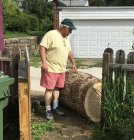 I’ve just come in from several hours working on a 25” diameter x 30” piece of white oak. A developer is preparing to build on a lot behind us, and had an arborist take down several large trees. My eyes are often bigger than my stomach, and that was the case today. Hard to resist something like this. I have a lathe with a 20” swing and was able to cut two large rounds that are 20” by about 9” thick, as well as several more 10 and 12” blanks. After all the work that went into getting these out, I wonder the best way to use them. Would you rough turn something now, or just coat them and wait? I have a new McNaughton tool, and could try coring them, but am not yet proficient enough to be sure I won’t waste these huge blanks. I’m curious to hear your advice. Thanks loads!
I’ve just come in from several hours working on a 25” diameter x 30” piece of white oak. A developer is preparing to build on a lot behind us, and had an arborist take down several large trees. My eyes are often bigger than my stomach, and that was the case today. Hard to resist something like this. I have a lathe with a 20” swing and was able to cut two large rounds that are 20” by about 9” thick, as well as several more 10 and 12” blanks. After all the work that went into getting these out, I wonder the best way to use them. Would you rough turn something now, or just coat them and wait? I have a new McNaughton tool, and could try coring them, but am not yet proficient enough to be sure I won’t waste these huge blanks. I’m curious to hear your advice. Thanks loads!
Last edited:

